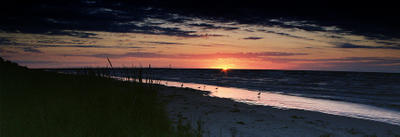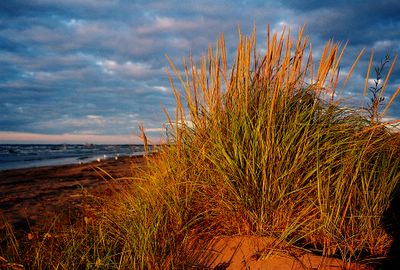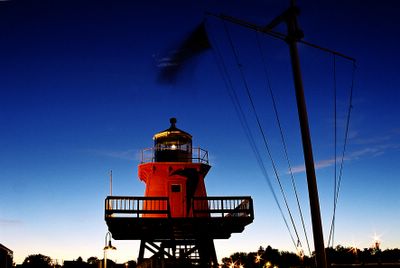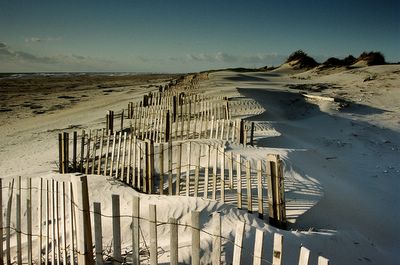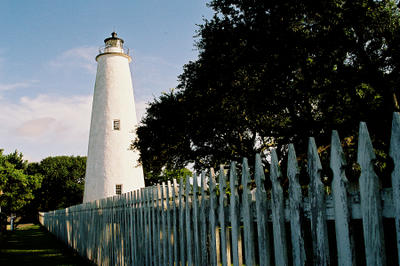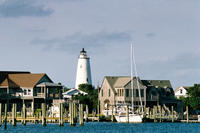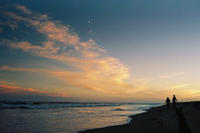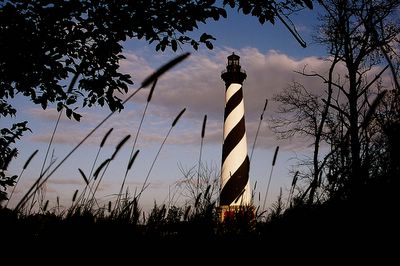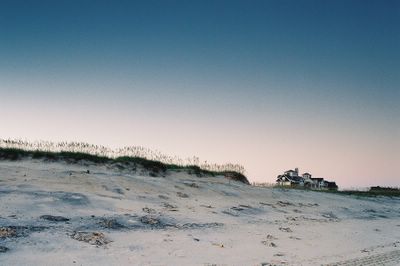
Sometimes I will see a potential photographic subject that I think is full of promise, but no matter what I do with the camera, no matter what lens or angle I try, the result just doesn't do it for me and I give up without taking anything.
Other times I will dismiss a scene as having nothing really special going for it, but once I put the camera to my eye, something immediately connects in my mind and I find myself with a photo that holds some meaning.
The beach and houses above are just such a case. While there was some nice twilight lighting going for it, it still seemed like a pretty ordinary scene until I assessed all of the elements that showed up in the frame: the wild sea oats along the dune, the row of beach houses sprouting up, as it were, beyond the dune, the footprints and tire tracks of people who have intruded into the natural order of the Outer Banks. Even the audacity of the intruders to place a sign on the beach warning other intruders to keep away.
Humans are both the affector and the affected when it comes to the environment. Okay, I admit it, there's a bad pun in the title of this post. The place in this photo is currently being battered by Hurricane Ophelia. Sometime today it will meet the eye of the storm. But the people of the Outer Banks show an amazing preparedness when it comes to dealing with the forces of nature as compared to the amazing complacency of places like New Orleans. They've built their homes raised above the ground to avoid inevitable storm surges. Their houses have narrow profiles to minimize wind damage. Evacuation routes are clearly marked.
Like this tree, the people who have intruded into the Outer Banks

are windblown, but they've adapted. They are there to stay. The winds have shaped them, but they are stronger for it. Perhaps there's a lesson for me here in all this, too. That's why I took these pictures.
Click on photos to enlarge. © 2005 James Jordan. 
 Spring is a metaphor for renewal and new birth; winter is a metaphor for death. Fall is that season that speaks of passing the prime of life and looking ahead to the end.
Spring is a metaphor for renewal and new birth; winter is a metaphor for death. Fall is that season that speaks of passing the prime of life and looking ahead to the end.